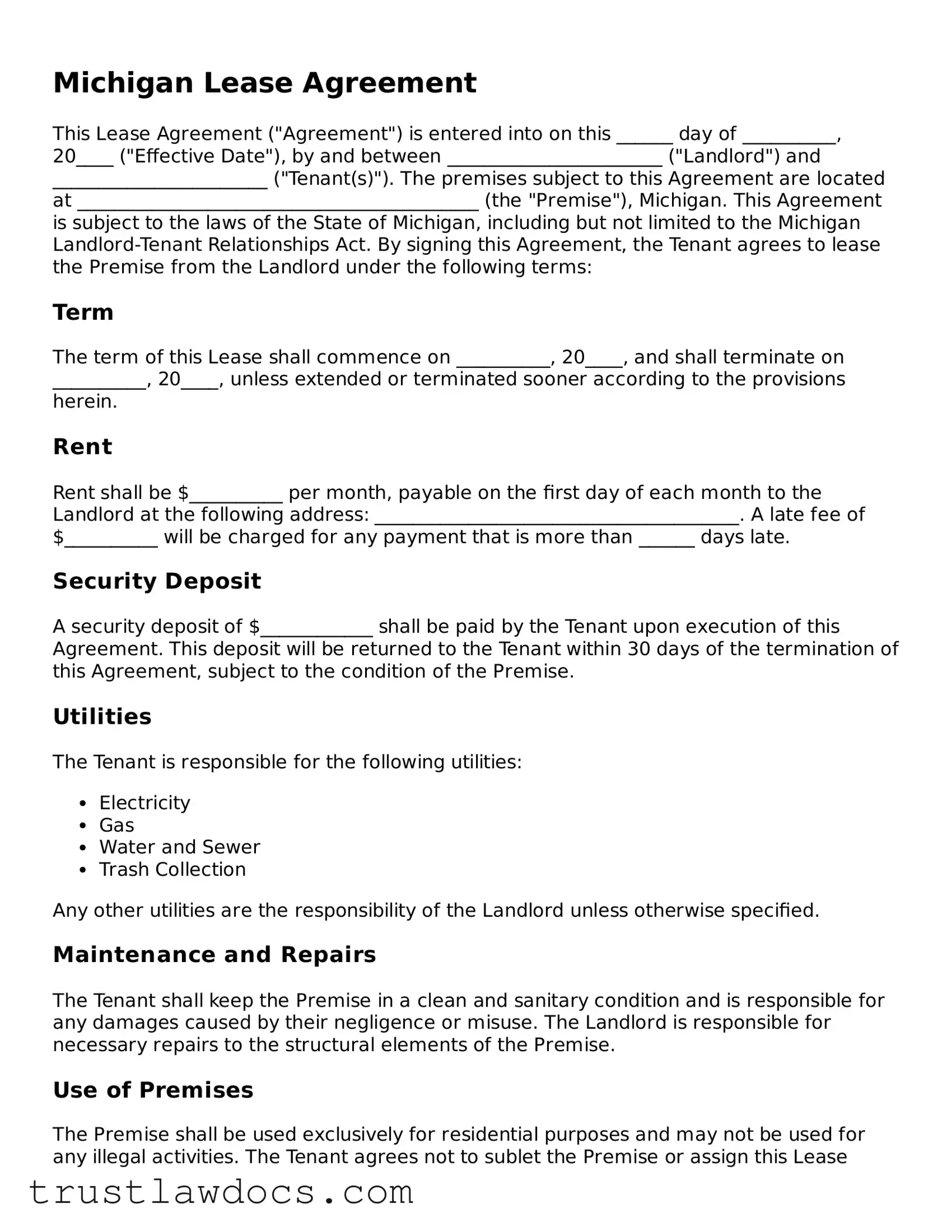What is a Michigan Lease Agreement?
A Michigan Lease Agreement is a legal document that outlines the terms and conditions under which a rental property is leased by the landlord to the tenant in the state of Michigan. This agreement specifies details such as rent amount, payment schedule, security deposit requirements, and the rights and responsibilities of both the landlord and tenant.
How do I know if my Michigan Lease Agreement is legally binding?
To ensure your Michigan Lease Agreement is legally binding, make sure it includes all necessary information such as property details, tenant and landlord information, rent details, and any other legally required disclosures specific to Michigan. Both parties should sign and date the agreement. It's recommended to have the agreement reviewed by a legal professional.
Can I write my own Michigan Lease Agreement?
Yes, you can write your own Michigan Lease Agreement. However, it's important to include all the key components that make the lease valid and to comply with Michigan state laws. Using a template or consulting with a professional can help ensure your lease meets all legal requirements.
What should be included in a Michigan Lease Agreement?
A Michigan Lease Agreement should include the property address, names and contact information for the landlord and tenants, rent amount and due date, security deposit details, lease term, rules regarding pets, maintenance responsibilities, and any other conditions or restrictions. Also, include any required Michigan legal disclosures.
How long can a Michigan Lease Agreement last?
The length of a Michigan Lease Agreement can vary. Common lease terms are one year, but the agreement can be set for any length of time that both the landlord and tenant agree upon. Short-term leases and month-to-month arrangements are also possible.
Can a Michigan Lease Agreement be terminated early?
Yes, a Michigan Lease Agreement can be terminated early, but it usually requires agreement from both the landlord and tenant. The lease should outline conditions under which it may be terminated early. If not, the parties can negotiate a mutual termination or follow Michigan law for lease termination.
Are there any disclosures that must be made in a Michigan Lease Agreement?
Yes, Michigan law requires certain disclosures in lease agreements, such as the presence of lead paint in older buildings or the landlord's name and address for legal notices. Make sure to include all mandatory disclosures to comply with state laws.
What happens if a tenant breaks a Michigan Lease Agreement?
If a tenant breaks a Michigan Lease Agreement, the landlord may have the right to keep the security deposit, seek unpaid rent, and/or pursue legal action for damages. The specific consequences should be outlined in the lease agreement itself and follow Michigan law.
Can I change the terms of a Michigan Lease Agreement once it's been signed?
Modifying a signed Michigan Lease Agreement requires the consent of both the landlord and tenant. Any changes should be made in writing and signed by both parties to be legally valid. This ensures clear communication and agreement on the new terms.
